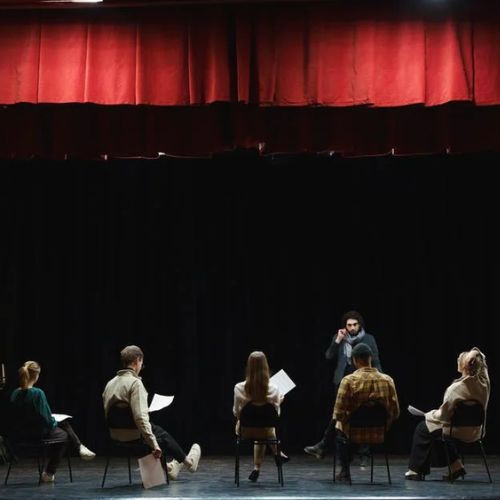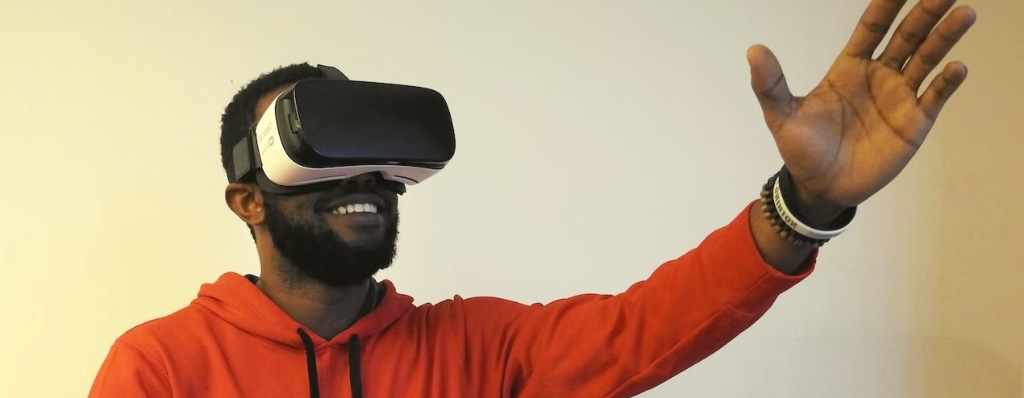The trap to avoid in training is to fall into repetition and routine.

This is essential to keep employees interested and to combine efficiency and fun.
In this sense, it is legitimate to ask what innovative learning methods can be used in training.
Digital, behavioural or game-based pedagogical methods.
There are many forms of innovative learning methods, leaving you free to choose.
Do you want to boost your training sessions? 💥
This article is for you 👊
Here are 3 original ideas to make your training more dynamic.
Method 1: SAVI, a tool for valorisation and involvement
As a tool for involving all participants, the SAVI method is also a kind of guide for trainers.
The S refers to reassuring the participants.
→ More explicitly, it is about reassuring them and putting them at ease from the beginning to the end of the training.
The A for its part implies making each person a full-fledged actor in the training.
→ The participants’ interventions are thus greatly encouraged.
The V refers to the valorisation of each participant.
→ All ideas, suggestions, subject openings and even contradictions are to be taken seriously.
Finally, the I refers to the thorough involvement of everyone.
→ As a logical continuation of the previous factors, involvement is intended to encourage each participant to achieve his or her training objectives well.
The overall dynamic of the SAVI method is therefore based on mutual listening, debate and stimulation.

Method 2: What about theatre?
Stop the prejudice 🖐
Theatre does not only belong on stage.
It is very useful in the professional world, especially for uninhibiting the participants of your training sessions.
By using theatre, the training is relieved of an overly formal aspect and opens the door to all possibilities for the participants’ expression.
We sometimes hear about integrated theatre techniques.
Through dramatizations, role-playing and improvisation exercises, everyone’s voice is freed.
You can find ideas for role plays here.
In addition, both creativity and exchange will be strongly stimulated to further strengthen the group’s cohesion.
Instead of having the impression of being in a school training scheme, the participants will fully appropriate the concepts of the latter. In this way, the training will take a completely original turn.
Method n°3: THIAGI’s framework games
Often overlooked among learning methods, the THIAGI framework games method is nevertheless very effective.
Its aim is to allow each participant to better assimilate the notions of the training, while practising activities of various kinds.
The postures adopted as well as the interactions between participants are just as diversified 🌳
These THIAGI framework games are collaborative in nature.
It is an innovative way of stimulating learners’ abilities such as memorization, collective effort, hierarchy of information or problem solving.
Individual and group phases are alternated in order to promote both individual and group involvement. The framework games are divided into several 10-minute stages ⏰
The training organiser is thus the master of the clocks, keeping a stopwatch throughout.
It is important to determine the educational objective at the outset. From there, it will be possible to determine the desired direction for these framework games.
Method 4: Do not neglect your non-verbal communication

When training is to be provided, many trainers attach great importance to the content of the training.
They prepare speeches, slides, examples, evaluations.
However, they don’t always think about working on their non-verbal communication 🎭
Certainly words have an impact. But so does body language.
Non-verbal communication is characterised by gestures, movements, mimics, tone of voice, facial expressions.
Everything that is not related to words but illustrates them and can be seen.
An innovative way of preparing for training sessions is to work on your non-verbal communication in detail.
The aim is to match your body language with the message you want to convey. At the same time, it is important to build confidence in the participants.
Method 5: Combining interrogative and demonstrative learning methods
When it comes to training techniques, there are some broad categories.
Among the learning methods, the interrogative method and the demonstrative method stand out.
The interrogative method opens the way for participants to ask questions. Links are thus established between several key concepts and discussions evolve naturally.
The demonstrative method involves the organiser demonstrating a process or the use of a medium.
A transfer of knowledge takes place 🧠
The participants must then reproduce what they have just learned until they are perfectly comfortable with the process.
The combination of these two methods thus optimises motivation but also enhances the value of each individual.
The skills of listening, thinking, logic and collaborative work are strongly activated.
This is a combination of reflection and simulation. An infallible cocktail of techniques 🥂
Other examples of innovative pedagogical methods
1. Les serious game
Learning by playing 🎲
The world of training is constantly deploying its imagination to offer increasingly innovative learning formats and solutions with the aim of making professional training more practical, more flexible and more fun.
In this context, the concepts of serious games and gamification have been developed and are becoming increasingly important in the training

2. Virtual reality
Get your helmets 🎧
Virtual reality is known to be perfectly suited to training.
VR allows you to be in a coherent environment, easy to access, and with the same proportions. The big plus of virtual reality immersion is first and foremost the sense of presence, which is greatly increased.
The advantage of virtual reality immersion is that it puts learners in a situation while they are at a distance.
Introducing employees to construction platforms, learning how to manage a new dangerous situation or improving customer relations for sales staff in shops of their choice from a training room is now possible.
Equipment costs are falling, making VR increasingly accessible.
*******
By now you are familiar with the innovative teaching methods that are used in face-to-face training.
Training is an integral part of every employee’s career. Whether it’s a new recruit or a learner who needs a refresher course, innovation is definitely a smart tactic.
By introducing innovative methods into your training courses, you will succeed in capturing the interest and curiosity of the learners. Beyond that, you will increase their involvement and motivation with more attractive training.
There are many options, such as the development of non-verbal behaviour, theatrical improvisations or the SAVI method. First of all, you need to define the educational objective of the training, as well as the general profile of the learners.
From there, all you have to do is select the active training method best suited to your project from among the teaching methods.
Originality is a guaranteed success 👍
*******
Are you interested in these training methods or do you want to apply them to your employees? Contact us so that we can discuss them











